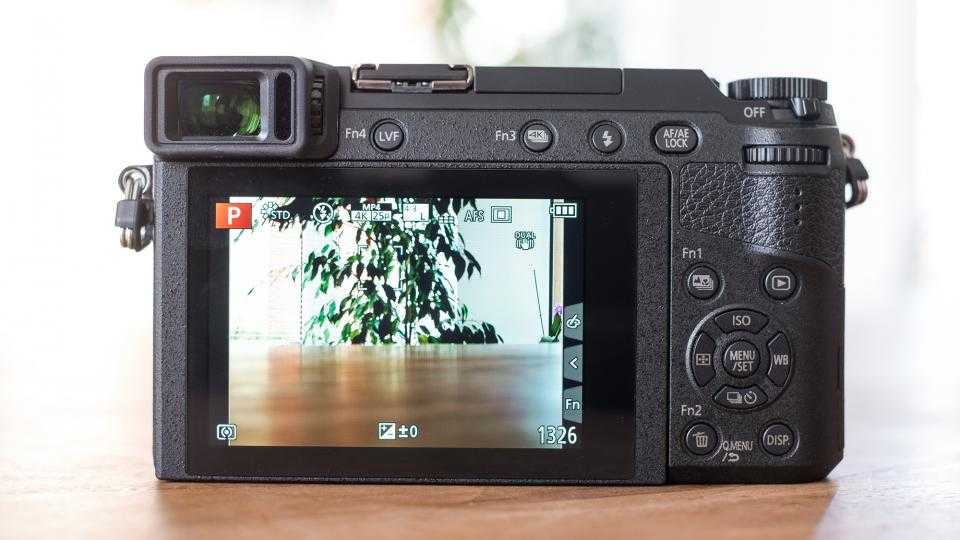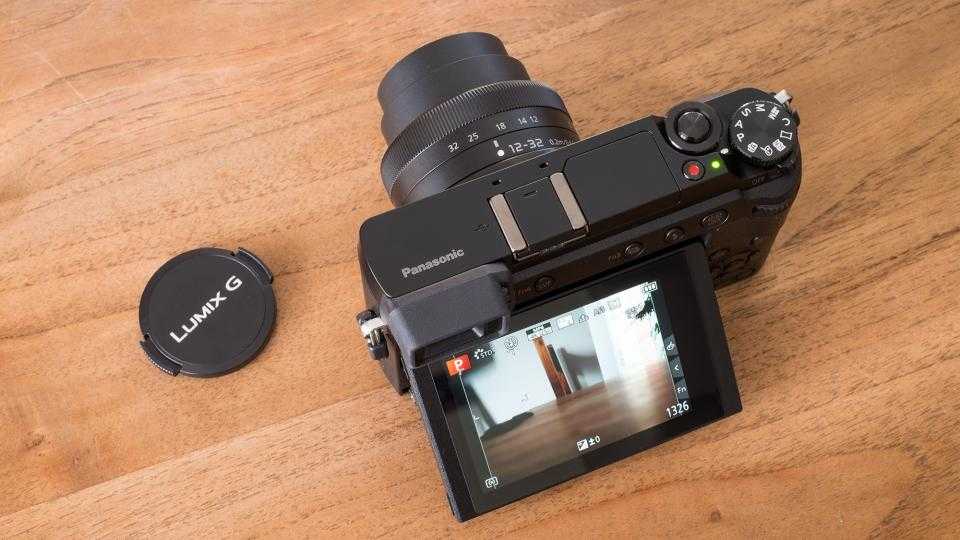
The Panasonic GX series of compact system cameras (CSCs) are aimed at photography enthusiasts who want something small and light. Whereas the Panasonic G7 and its predecessors resemble an SLR — and a dull-looking one at that — the GX cameras are slimmer, more handsome, feel sturdier and include extra features such as in-body stabilisation and articulated electronic viewfinders.
The GX80 is the fourth model in the range, and it’s also the most affordable to date at £599 with its 12-32mm kit lens. It sits below the GX8 rather than replacing it, with various slimmed down features and a price that’s £400 lower than the GX8 was at launch.
Design and features
The controls have been pared back compared to the GX8. There’s no dedicated exposure compensation dial or manual focus switch. Exposure compensation is still pretty quick to access, by pushing the rear command dial inwards and spinning it, although I wonder how many people will find this function. Initially I couldn’t find the aperture control, but eventually realised that the shutter button is encircled by a command dial. I also struggled to locate the Q Menu as the button has four labels associated with it. Perhaps it’s just me.
Single auto, full-time auto and manual focus are accessed via the Q menu, but I prefer to reassign one of the customisable buttons to this function. Even then it’s not as immediate as a labelled switch. Most photographers won’t need to switch modes regularly but it’s more of an issue for videography, where you might use autofocus to set up a shot and then switch to manual focus to avoid hunting while recording. Videographers will also be sorry to see the disappearance of a microphone socket and the Cinelike colour preset, which (on the GX8) captures flat colours that provide a useful starting point for colour grading in editing software. Charging is via USB rather than an external charger, so it’s not possible to charge one battery while using another — another setback particularly for videographers.
There’s an electronic viewfinder but this one doesn’t tilt. It’s not a crucial feature but it would have allowed for a more comfortable head position while shooting, especially for chronic slouchers such as me. The fixed viewfinder also brings the return of a problem that’s unique to people who favour their left eye — the touchscreen remains active for moving the autofocus point, but it’s all too easy to move it accidentally with the tip of the nose. This touch AF function can be switched off in the menu, but doing so disables it for both screen- and viewfinder-based operation.

Then again, if you can work around the nose-related issues (and it isn’t an issue if you place your right eye to the viewfinder) this touchscreen autofocus control is far quicker than buttons or joysticks offered elsewhere. The autofocus point size is freely adjustable from a small dot to almost the full height of the frame using the command dials. There are lots of other autofocus modes including extremely responsive subject tracking and face detection that pinpoints the subject’s eye.
The viewfinder image size has shrunk from 0.77x to 0.7x (equivalent) magnification and the eye cup has reverted back to the design on the GX7, which isn’t so good at blocking out light in peripheral vision. I shouldn’t grumble too much, though. The viewfinder’s 2.7 million dot resolution and 0.7x size are great by any normal standards. It has a 16:9 aspect ratio, which means that 4:3 photos don’t fill the screen but it’s perfect for framing videos.
The GX8 introduced a new 20-megapixel sensor to the Lumix G range. The GX80 reverts back to 16 megapixels but it omits an optical low-pass filter (OLPF). In theory this should boost detail levels at the risk of increasing aliasing artefacts such as moiré interference. In practice it’s all pretty subtle. Even the difference between 16 and 20 megapixels isn’t worth getting het up about.
So far I’ve been listing the downgrades compared to the GX8, but there’s plenty of good news, too. There’s an integrated pop-up flash, which is missing from the GX8. It can be flipped upwards to bounce the flash off the ceiling — a great trick for creating more diffuse light. Panasonic has managed to squeeze a hotshoe onto the top plate, too.
The cameras is 61g lighter than the GX8 and about 1cm smaller in all three dimensions. The kit lens is smaller, too, collapsing down to 24mm when not in use. Together they measure 70mm deep, which is too chunky for trouser pockets but will probably fit into a coat pocket or small bag rather than needing to carry a dedicated camera bag. The downside is the lens’s meagre 2.7x zoom range, equating to 24-64mm on a full-frame camera. That might prove to be frustrating when using the GX80 when travelling. I’d much prefer the extra zoom range — and bulk — of Panasonic’s 14-140mm (28-280mm equivalent) lens but this isn’t offered as a kit option.
The screen tilts up 90 degrees and down 45 degrees, which isn’t quite as flexible as the GX8’s fully articulated screen, but this one is easier to tilt upwards when shooting a elbow height. The shutter mechanism has been redesigned, apparently in an effort to reduce shutter shock that can cause a small amount of shake as the shutter opens. It’s also quieter as a result, which could be useful when you need to be unobtrusive. Meanwhile, an electronic shutter option is totally silent and supports shutter speeds up to 1/16,000 seconds.

4K and Performance
There are masses of novel shooting modes to choose from, including time-lapse, stop motion animation, panorama and bracketing for exposure, focus, white balance and aperture. Video capture is at 4K, which equates to 8 megapixels per frame. This is used for various photo-related tricks. 4K Photo captures a 4K video in a choice of aspect ratios and lets you save individual frames as a photo — effectively making it a 30fps continuous mode. Post Focus captures a second of 4K video as it sweeps through the lens’s focus range, and then lets you refocus the captured photo by tapping the part you want to be in focus.
Performance is just as fast as the GX8. Autofocus took around 0.2 seconds to lock onto subjects, and I timed 0.4 seconds between shots for both JPEGs and RAW files. Full-power flash shots were just 1.8 seconds apart. Continuous mode ran at 8.1fps for JPEGs or 5.6fps for RAW. The buffer memory holds 99 JPEGs or 43 RAW frames, and it managed 50 RAW frames before slowing. JPEG capture with continuous autofocus was at 6fps.
Video quality
The GX80’s videos are extremely high quality. Its 4K footage blows any 1080p camera out of the water, even when comparing them on a 1080p display. Autofocus is smooth, responsive and easy to control via the touchscreen.
It’s also possible to apply manual exposure adjustments using the touchscreen to avoid button clicks interfering with the soundtrack. With so much going for it, it’s a shame about the missing microphone socket, Cinelike colour profiles and external charger, but this is still one of the best video cameras around. Continues on Page 2